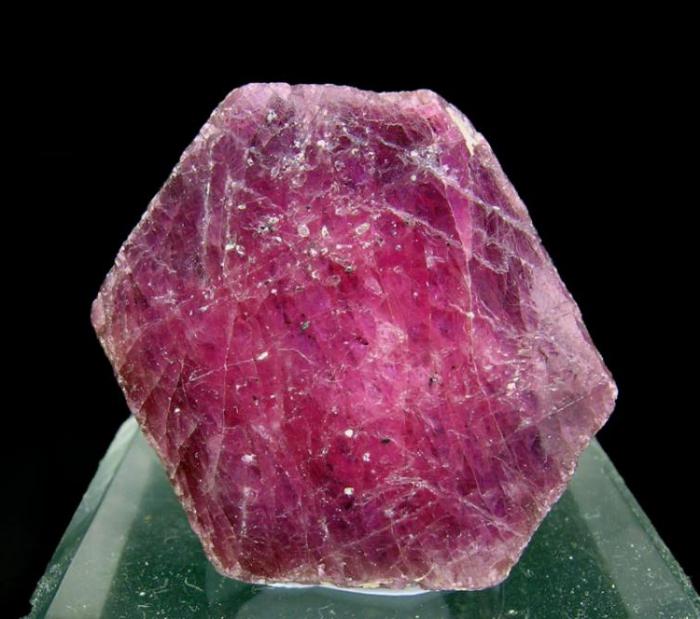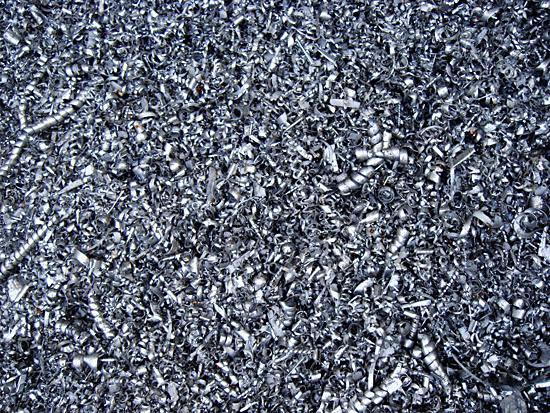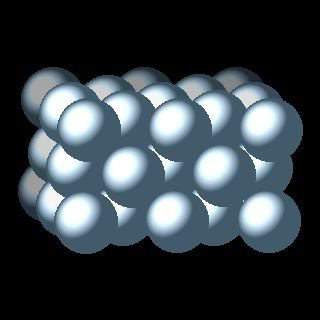Each chemical element can be considered from the point of view of three sciences: physics, chemistry and biology. And in this article we will try to characterize aluminum as accurately as possible. This is a chemical element in the third group and the third period, according to the periodic table. Aluminum is a metal that has medium chemical activity. Also in its compounds, amphoteric properties can be observed. The atomic mass of aluminum is twenty-six grams per mole.
Physical characteristics of aluminum
Under normal conditions, it is a solid. The formula of aluminum is very simple. It consists of atoms (not combined into molecules), which are built using a crystal lattice into a solid. The color of aluminum is silver white. In addition, it has a metallic luster, like all other substances of this group. The color of aluminum used in industry may be different due to the presence of impurities in the alloy. This is a fairly light metal.
Its density is 2.7 g / cm3, that is, it is approximately three times lighter than iron. In this, it can only yield to magnesium, which is even lighter than the metal in question. The hardness of aluminum is quite low. In it, it is inferior to most metals. The hardness of aluminum is only two on
the Mohs scale. Therefore, to strengthen it, harder alloys are added to alloys based on this metal.
Aluminum melts at a temperature of only 660 degrees Celsius. And it boils when heated to a temperature of two thousand four hundred and fifty-two degrees Celsius. This is a very ductile and fusible metal. The physical characteristic of aluminum does not end there. I would also like to note that this metal has the best electrical conductivity after copper and silver.
Prevalence in nature
Aluminum, the technical characteristics of which we have just examined, is quite common in the environment. It can be observed in many minerals. The aluminum element is the fourth most common element in nature. Its mass fraction in the earth's crust is almost nine percent. The main minerals in which its atoms are present are bauxite, corundum, and cryolite. The first is rock, which consists of oxides of iron, silicon and the metal in question, and water molecules are also present in the structure. It has a heterogeneous color: fragments of gray, reddish-brown and other colors, which depend on the presence of various impurities. Thirty to sixty percent of this breed is aluminum, a photo of which can be seen above. In addition, corundum is a very common mineral in nature.

This is alumina. Its chemical formula is Al2O3. It can have red, yellow, blue or brown. Its Mohs hardness is nine units. The varieties of corundum include the well-known sapphires and rubies, leucosapphires, as well as padparaj (yellow sapphire).
Cryolite is a mineral that has a more complex chemical formula. It consists of aluminum and sodium fluorides - AlF3 • 3NaF. It looks like a colorless or grayish stone with low hardness - only three on the Mohs scale. In the modern world, it is synthesized artificially in laboratory conditions. It is used in metallurgy.
Also, aluminum can be found in nature in the composition of clays, the main components of which are silicon oxides and the metal in question, associated with water molecules. In addition, this chemical element can be observed in the composition of nepheline, the chemical formula of which is as follows: KNa3 [AlSiO4] 4.
Getting
Characterization of aluminum involves consideration of methods for its synthesis. There are several methods. The first production of aluminum occurs in three stages. The last of these is the electrolysis procedure at the cathode and carbon anode. To carry out such a process, alumina is necessary, as well as such auxiliary substances as cryolite (formula - Na3AlF6) and calcium fluoride (CaF2). In order for the decomposition of alumina dissolved in water to occur, it must be heated together with molten cryolite and calcium fluoride to a temperature of at least nine hundred and fifty degrees Celsius, and then a current of eighty thousand amperes and a voltage of five eight volts. Thus, due to this process, aluminum will settle on the cathode, and oxygen molecules will collect on the anode, which, in turn, oxidize the anode and turn it into carbon dioxide. Before carrying out this procedure, bauxite, in the form of which aluminum oxide is mined, is preliminarily purified from impurities, and the process of its dehydration also takes place.

The production of aluminum by the method described above is very common in metallurgy. There is also a method invented in 1827 by F. Weller. It lies in the fact that aluminum can be mined using a chemical reaction between its chloride and potassium. It is possible to carry out such a process only by creating special conditions in the form of very high temperature and vacuum. Thus, from one mole of chloride and the same volume of potassium, one mole of aluminum and three moles of potassium chloride can be obtained as a by-product. This reaction can be written in the form of the following equation: ІІ3 + 3 = І + 3І. The specified method has not gained much popularity in metallurgy.
Chemistry characteristics of aluminum
As mentioned above, this is a simple substance that consists of atoms that are not combined into molecules. Similar structures form almost all metals. Aluminum has a fairly high chemical activity and strong reducing properties. The chemical characterization of aluminum will begin with a description of its reactions with other simple substances, and then interactions with complex inorganic compounds will be described.
Aluminum and simple substances
These include, first of all, oxygen - the most common compound on the planet. Twenty-one percent of it consists of the atmosphere of the Earth. The reactions of this substance with any other are called oxidation, or combustion. It usually occurs at high temperatures. But in the case of aluminum, oxidation under normal conditions is possible - this is how an oxide film is formed. If this metal is crushed, it will burn, while emitting a large amount of energy in the form of heat. To carry out the reaction between aluminum and oxygen, these components are needed in a 4: 3 molar ratio, as a result of which we obtain two parts of the oxide.
This chemical interaction is expressed as the following equation: 4AI + 3O2 = 2AIIO3. Also possible are the reactions of aluminum with halogens, which include fluorine, iodine, bromine and chlorine. The names of these processes come from the names of the corresponding halogens: fluorination, iodination, bromination and chlorination. These are typical addition reactions.
For example, we give the interaction of aluminum with chlorine. This kind of process can only happen in the cold.
So, taking two moles of aluminum and three moles of chlorine, we obtain as a result two moles of chloride of the metal in question. The equation of this reaction is as follows: 2AI + 3CI = 2AICI3. In the same way, aluminum fluoride, its bromide and iodide can be obtained.
With sulfur, the substance in question reacts only when heated. To carry out the interaction between these two compounds, you need to take them in molar proportions of two to three, and one part of aluminum sulfide is formed. The reaction equation has the following form: 2Al + 3S = Al2S3.
In addition, at high temperatures, aluminum interacts with carbon, forming a carbide, and with nitrogen, forming a nitride. The following equations of chemical reactions can be cited as an example: 4І + 3 = І43; 2Al + N2 = 2AlN.
Interaction with complex substances
These include water, salts, acids, bases, oxides. Aluminum reacts differently with all of these chemical compounds. Let's take a closer look at each case.
Reaction with water
With the most complex compound on Earth, aluminum interacts when heated. This happens only in the case of preliminary removal of the film from the oxide. As a result of the interaction, amphoteric hydroxide is formed, and hydrogen is also released into the air. Taking two parts of aluminum and six parts of water, we obtain hydroxide and hydrogen in molar proportions of two to three. The equation of this reaction is written as follows: 2AI + 6H2O = 2AI (OH) 3 + 3H2.
Reaction with acids, bases and oxides
Like other active metals, aluminum is able to enter into a substitution reaction. Moreover, it can displace hydrogen from an acid or a cation of a more passive metal from its salt. As a result of such interactions, an aluminum salt is formed, and hydrogen is also released (in the case of acid) or a pure metal (one that is less active than the one under consideration) precipitates. In the second case, the reducing properties that are mentioned above manifest themselves. An example is the interaction of aluminum with hydrochloric acid, in which aluminum chloride is formed and hydrogen is released into the air. A similar kind of reaction is expressed as the following equation: 2AI + 6CHI = 2AICI3 + 3H2.
An example of the interaction of aluminum with a salt is its reaction with copper sulfate. Taking these two components, we end up with aluminum sulfate and pure copper, which will precipitate out. With acids such as sulfuric and nitric, aluminum reacts in a peculiar way. For example, when aluminum is added to a dilute solution of nitrate acid in a molar ratio of eight parts to thirty, eight parts of the nitrate of the metal in question are formed, three parts of nitric oxide and fifteen of water. The equation of this reaction is written as follows: 8Al + 30HNO3 = 8Al (NO3) 3 + 3N2O + 15H2O. The specified process occurs only in the presence of high temperature.
If we mix aluminum and a weak solution of sulfate acid in molar proportions of two to three, we get the sulfate of the metal in question and hydrogen in a ratio of one to three. That is, an ordinary substitution reaction will occur, as is the case with other acids. For clarity, we give the equation: 2Al + 3H2SO4 = Al2 (SO4) 3 + 3H2. However, with a concentrated solution of the same acid, everything is more complicated. Here, as in the case of nitrate, a by-product is formed, but not in the form of oxide, but in the form of sulfur, and water. If we take the two components we need in a molar ratio of two to four, as a result we get one part of the salt of the metal and sulfur in question, and four of the water. This chemical interaction can be expressed using the following equation: 2Al + 4H2SO4 = Al2 (SO4) 3 + S + 4H2O.

In addition, aluminum is able to react with alkali solutions. To carry out such a chemical interaction, you need to take two moles of the metal in question, the same amount
of sodium or potassium hydroxide, as well as six moles of water. As a result, substances such as sodium or potassium tetrahydroxoaluminate are formed, as well as hydrogen, which is released in the form of a gas with a pungent odor in molar proportions of two to three. This chemical reaction can be represented as the following equation: 2AI + 2KOH + 6H2O = 2K [AI (OH) 4] + 3H2.
And the last thing to consider is the laws of interaction of aluminum with certain oxides. The most common and used case is Beketov’s reaction. It, like many other of the above, occurs only at high temperatures. So, for its implementation it is necessary to take two moles of aluminum and one mole of ferrum oxide. As a result of the interaction of these two substances, we obtain aluminum oxide and free iron in the amount of one and two mol, respectively.
Use of the metal in question in industry
Note that the use of aluminum is a very common occurrence. First of all, the aviation industry needs it. Along with magnesium alloys, alloys based on the metal in question are also used here. We can say that the average aircraft is 50% aluminum alloys, and its engine is 25%. Also, the use of aluminum is carried out in the process of manufacturing wires and cables due to its excellent electrical conductivity. In addition, this metal and its alloys are widely used in the automotive industry. These materials include the bodies of cars, buses, trolleybuses, some trams, as well as ordinary cars and electric trains.

It is also used for smaller purposes, for example, for the production of packaging for food and other products, dishes. In order to make silver paint, the powder of the metal in question is needed. Such paint is needed in order to protect the iron from corrosion. We can say that aluminum is the second most common metal used in industry after ferrum. His compounds and he himself are often used in the chemical industry. This is due to the special chemical properties of aluminum, including its reducing properties and the amphoteric nature of its compounds. The hydroxide of the chemical element in question is necessary for water purification. In addition, it is used in medicine in the vaccine manufacturing process. It can also be found in some types of plastic and other materials.
Role in nature
As already mentioned above, aluminum is found in large quantities in the earth's crust. It is especially important for living organisms. Aluminum is involved in the regulation of growth processes, forms connective tissues, such as bone, ligamentous and others. Thanks to this microelement, the processes of tissue regeneration are faster. Its lack is characterized by the following symptoms: impaired development and growth in children, in adults - chronic fatigue, decreased working capacity, impaired coordination of movements, decreased rate of tissue regeneration, muscle weakness, especially in the limbs. This phenomenon can occur if you eat too few foods that contain this microelement.
However, an excess of aluminum in the body is a more common problem. In this case, the following symptoms are often observed: nervousness, depression, sleep disturbances, memory loss, stress resistance, softening of the musculoskeletal system, which can lead to frequent fractures and sprains. With a prolonged excess of aluminum in the body, problems often arise in the operation of almost every organ system.
A number of reasons can lead to this phenomenon. First of all, this is aluminum utensils. Scientists have long proved that utensils made from the metal in question are unsuitable for cooking in it, since at high temperatures part of the aluminum enters the food, and as a result, you consume much more of this trace element than the body needs.
The second reason is the regular use of cosmetics containing the metal in question or its salts. Before using any product, you need to carefully read its composition. Cosmetics are no exception.
The third reason is taking medications that contain a lot of aluminum for a long time. As well as the improper use of vitamins and nutritional supplements, which include this trace element.
Now let's figure out which products contain aluminum in order to regulate your diet and organize the menu correctly. First of all, it is carrots, processed cheeses, wheat, alum, potatoes. Of fruits, avocados and peaches are recommended. In addition, white cabbage, rice, and many medicinal herbs are rich in aluminum. Also, the cations of the metal in question may be contained in drinking water. To avoid high or low aluminum content in the body (however, just like any other trace element), you need to carefully monitor your diet and try to make it as balanced as possible.